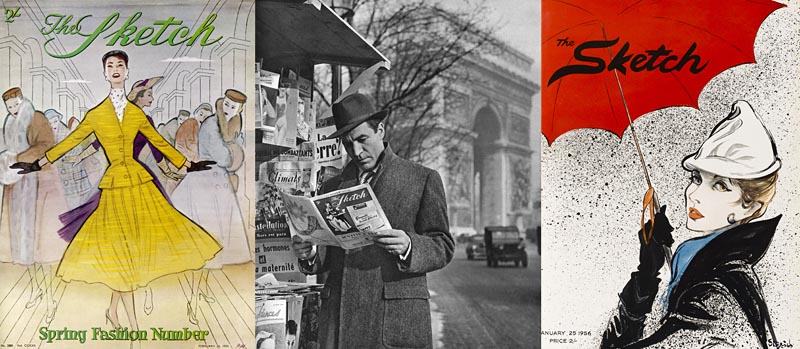Mary Evans Picture Library collection of the week: The Sketch

Continuing our occasional series about titles in The Illustrated London News archive, this week we turn our attention to The Sketch (not to be confused with the newspaper, The Daily Sketch).
Launched in 1893 as a sister paper to The Illustrated London News, The Sketch billed itself as a “A Journal of Art and Actuality” with a light-hearted mix of theatre, celebrity and gossip that was designed to counterbalance the more heavyweight, news-focused content of the ILN.
The brainchild of journalist Clement Shorter and William Ingram (son of the ILN’s founder, Hebert Ingram), Shorter would edit the magazine until 1900. He was succeeded by John Latey from 1900-1902 and Keble Howard (1902-1905). Bruce Ingram, also editor of The Illustrated London News, took on the role from 1905-1946. Even though he was absent for much of Great War while serving in the Army, he was able to maintain reasonable contact with the office and the magazine continued to flourish.
The Sketch was the mother of a group of magazines known as the “mid-weeklies” (due to their publication each Wednesday) and was the first of its kind to cover “society” news. Its aim, according to a description in the ILN in 1928, was to appeal “to the cultivated people who in their leisure moments look for light reading and amusing pictures, imbued with a high artistic value”.
This artistic value was well represented and The Sketch is renowned for fostering some of the very best artistic talent to emerge during the twentieth century. Of Bruce Ingram’s decision to publish his cartoons in The Sketch, William Heath Robinson confessed, “it fairly launched me on my career as a humorous artist.” His series of cartoons during the Great war portrayed hapless Tommies and the perfidious ‘Hun’ using increasingly outlandish ways to outwit each other.
The Sketch’s weekly gossip column, “Letters of Phrynette”, was illustrated in a Beardsley style by Gladys Peto, and in the 1920s, George Studdy’s cartoons of a mischievous, saucer-eyed puppy, eventually became the famous ‘Bonzo’ whose name was chosen by Ingram, and who found global megastardom through the inter-war years. Another character to emerge from The Sketch was ‘Gran’pop’ – a wily orang-utan painted by Lawson Wood who, together with his motley crew of pigs and monkeys raised a smile on a weekly basis.
The magazine also pioneered the high-quality pin-up in Britain, exclusively publishing the work of Raphael Kirchner during the First World War and then David Wright’s ‘Lovelies’ during the Second. The iconic graphic artist Erté designed some covers for The Sketch, and also contributed other illustrations such as a zodiac series in the late 1930s.
Photographers were also keen to have their work published in The Sketch. Madame Yevonde (whose black and white work we own the copyright to) was one contributor, while Angus McBean was discovered by The Sketch’s art editor and carried out a number of surrealist portraits of celebrities, many of which were published on the cover during the 1930s.As with all titles in the ILN archive, we continue to add material on a weekly basis, but can also digitally search the magazine on your behalf.
To discover a stellar selection from this illustrious treasure chest of imagery, click here.
Mary Evans Picture Library newsletter – 13 February 2020.
